When I go to the ocean, I remember all the times I had a great time playing in the sand and having fun in the water. The beach is a great place to build healthy muscle development in your legs and feet, in a fun and natural setting.
Surfing can help develop healthy feet as you naturally work your legs and feet when walking in the sand, swimming in the ocean, and standing on the surfboard. As you balance and manipulate your feet to control the board, you are helping develop healthy feet.
When I was learning to ride a surfboard, I remember the challenge it was to swim with the board, get up on my feet, and start to balance. After a couple of tries, I needed to rest because of some challenging ocean currants. It was fun, but it can be a workout.
Practicing Balancing Helps Feet
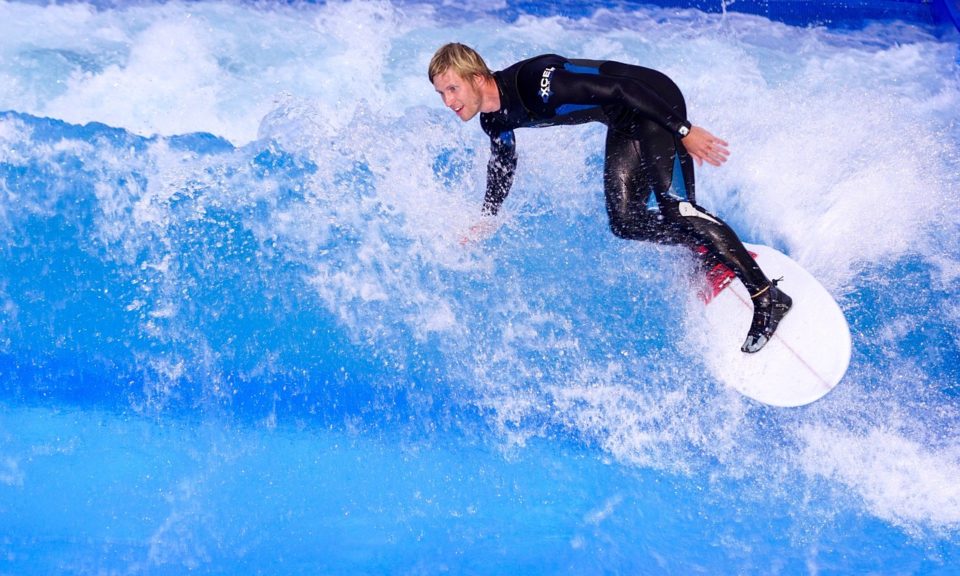
Surfing can help your legs and feet in part because you are activating your muscles by balancing. While at the beach or at home, one way to help you start to develop those leg and foot muscles for a better surfing ability is by practicing balancing.
Balancing helps to develop the fast and slow-twitch muscles that can help you maneuver and balance while surfing. Slow-twitch muscles are developed when you use your muscles for a sustained period, and fast-twitch muscles are developed when using your muscles during quick bursts.
You can start by practicing learning how to stand up on your board. At the beach, you will be able to stand on your board without damaging it, or you can find a replacement board of some kind to stand on at home.
You can start by laying down on the board, going to a one-leg kneeling position, and lastly, switching to the feet. (This might not be the best practice to learn to surf, but it can help with balance.) Try the slide-up technique (going from the stomach to the feet in a crouched position). It may work better for others, so decide what technique you want to practice.
Once you get better with the leg on one side, try switching to the other leg while in the transition from lying down to standing up.
This will help you start to develop the ability to balance a bit better over a few weeks of working on getting up on the board while it is stable. Your muscles will strengthen and your feet will better be able to handle a less stable board.
Try a Balance Board
You can also use a balance board at home. These can be a lot of fun to try on the carpet. After a couple of weeks, you can start to get really good at balancing using one of these boards.
You might try transitioning to a less dense carpet to challenge your balancing even more, and your feet will develop more fast-twitch muscles. The ultimate challenge would be to use the balance board on a smooth surface, as it can be very challenging depending on the board.
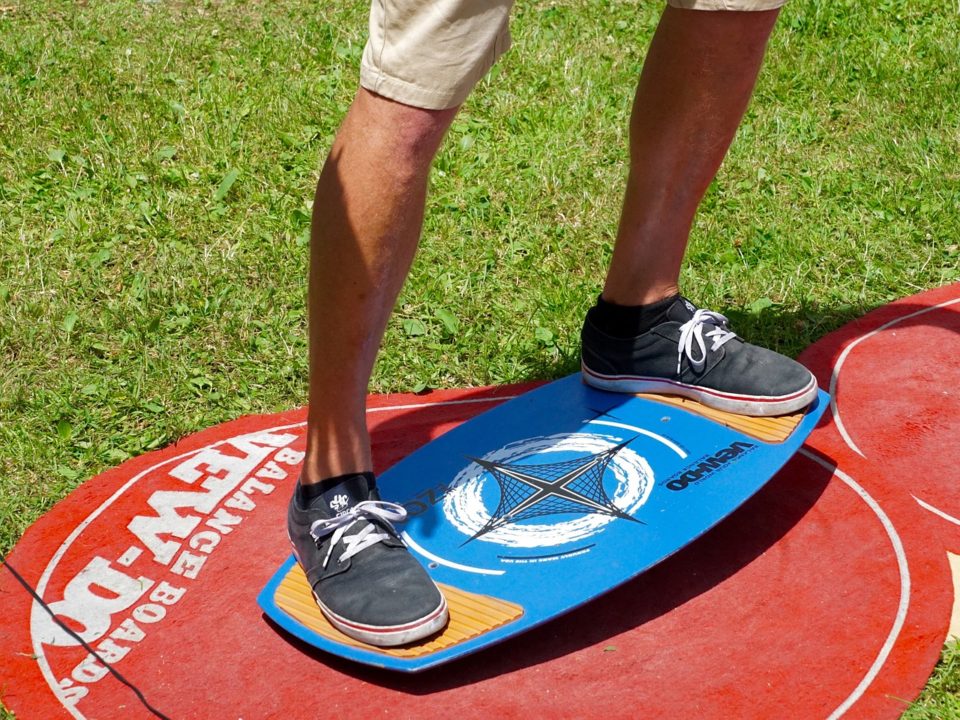
Use a Skateboard to Balance
A skateboard is a great way to help your legs and feet start to develop the ability to handle an unstable situation.
Skateboards come in all sizes and many varieties. A beginner might what to have a tighter board to help with balancing and learning the techniques of moving and stopping.
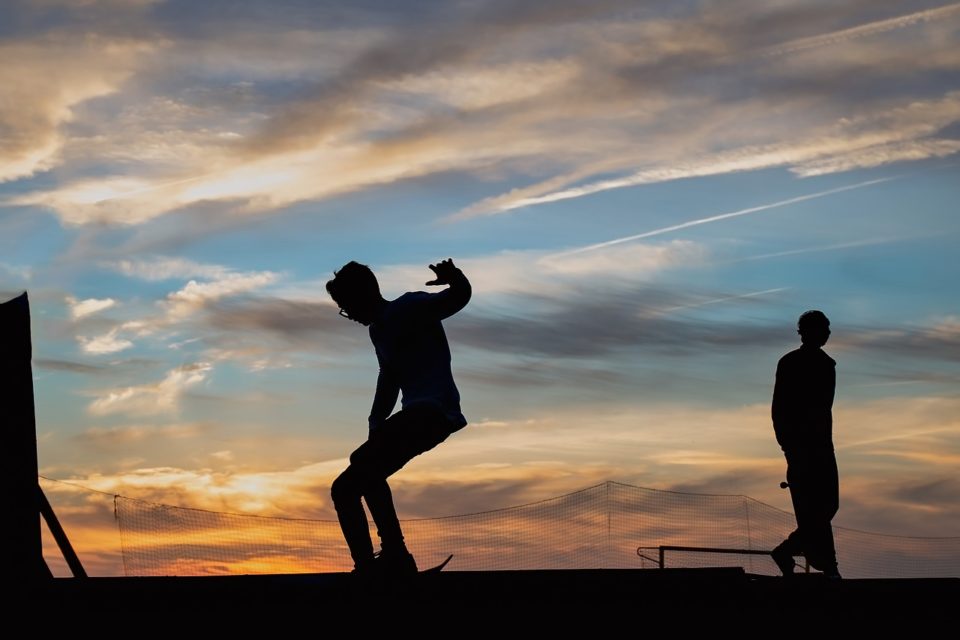
You can practice almost anywhere, even in your living room. Place the skateboard on the floor and watch a little TV while standing. Loosen the trucks on the skateboard for a more unstable board and to help get the muscles in your feet activated.
Try going shoeless in a safe place while balancing on your board to activate even more muscles on your toes and feet.
Use a Snowboard and Skis
While you’re not quite activating your feet as much as some other methods, it helps your overall balance to practice on a snowboard or skis.
Since your feet can move much, you’ll be activating muscles you may not always use when surfing, so your legs and feet will likely have more stability with some regular practice.

Some other ways to practice balancing are:
- Stand on a plank that is raised a bit off the ground.
- Stand on one foot for a minute.
- Stand on a raised brick garden retaining wall and walk on it.
- Lift your toes off the ground or your heels off the ground and balance in these positions for up to a minute.
- Use a paint can and fill it with concrete to create a small pillar to balance on.
Be cautious when balancing; falling and hurting yourself may occur. I’ve definitely fallen many times while trying to balance and have hurt myself several times.
Walking from the Car to the Beach
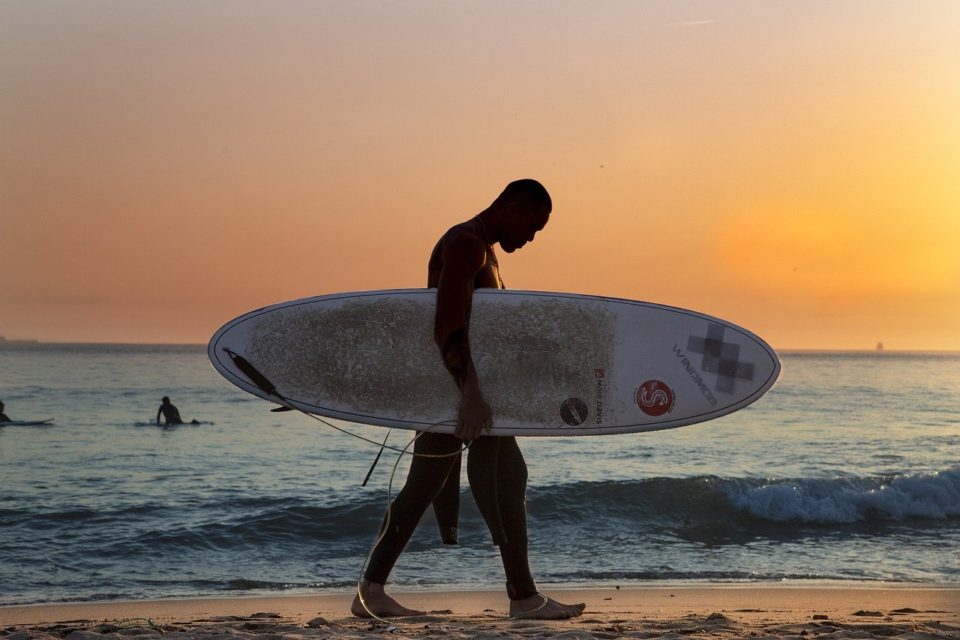
You’re not getting much of a workout walking from the car to the beach, but it is an important aspect of healthy feet. Walking in the sand for a half-mile is great for activating many of your foot muscles from your heels to your toes.
Your feet don’t get this natural activation when you’re wearing shoes most of the week. Walking in the sand forces your toes and feet to do work, so they start getting stronger over time.
Next time you’re at the beach, think about traveling an extra couple of minutes down the beach while carrying your surfboard. It will benefit your foot health and likely help you when you need to balance on that next wave you ride.
Swimming While Surfing?
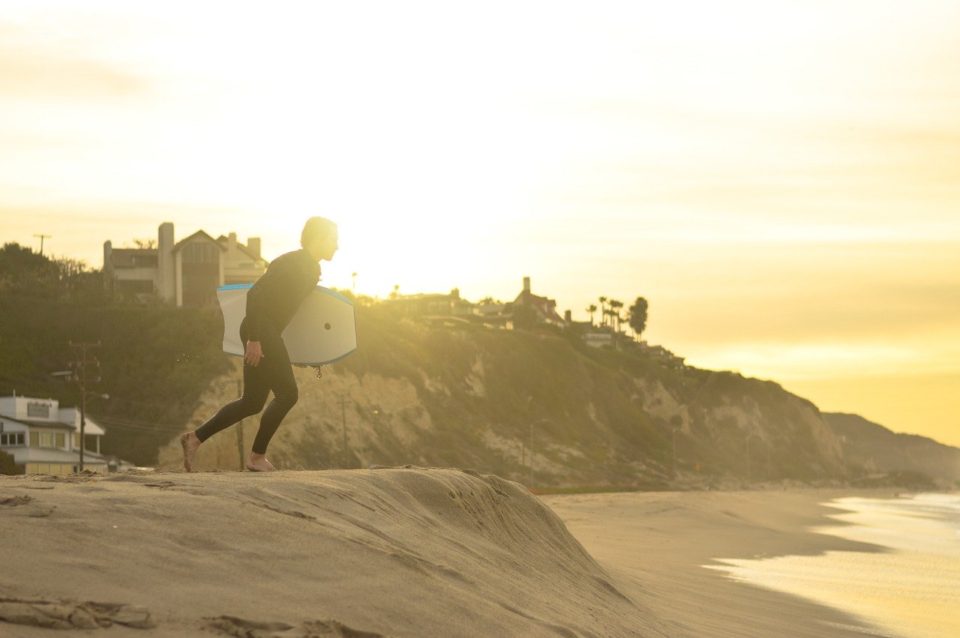
You are not likely to get much foot use while paddling your surfboard out. You’re using your arms and keeping your feet on the board when getting out to the waves. But surfing can also take the form of using a boogie board or just body surfing.
Boogie boarders and body surfers rely on their legs and feet to help get them into position to ride a wave. They are activating the leg and foot in a different way than they would while standing and balancing on a surfboard.
This type of surfing is very helpful for those who are looking to take the stress off their feet and still get lots of blood circulation to aid in the healing process if needed.
If you are dealing with ankle and foot issues, a boogie board or going body surfing can help you get exercise without the strain that using a surfboard may cause.
Helps with Athlete’s Foot
The ocean has various minerals that are good for the skin, and salt helps treat athlete’s feet. Sea salt helps with fungal issues because it has antibacterial and antifungal properties.
This might take a while. Fungal issues tend to be stubborn and salt helps to at least slow it down. The light from the sun and the seawater both can act as an antiseptic, helping to keep fungal issues in check.
Going in the cold water can also help activate some of your immune system so you can fight your athlete’s foot from the inside and out. (Credit – dailymail.co.uk)
Surfing and Flexibility
While surfing helps the muscles in your legs and feet to activate, it also can help you be more flexible. As you surf regularly, you are learning to move your body in ways that help you stretch in various ways. This helps you become more flexible over time, but it can also lead to injury if you’re not prepared.
Beginners should not take on waves that are too challenging and push their bodies too much. Surfers who push too hard can stretch too far and an injury can occur.
Making sure to warm up before surfing and to stretch regularly can help surfers stay flexible and prevent injuries.
Try it Out
If you’re ready to go surfing or to try some activities for healthy foot development, here are some items that we mentioned above that might help. Next time you’re at the beach, maybe you’ll want to try your hand at something new so you can have a good time and grow from the experience.
Conclusion
Surfing can have a healthy influence on your foot health. You can help develop your muscles and the seawater is healthy for your skin and body. You will be better able to balance and have more control over the muscles of your foot.
As you surf regularly, you will reap the rewards of healthy feet and be able to use them in a variety of other activities more proficiently. You can help your feet by practicing balancing techniques and activities and by stretching regularly. Happy Surfing!
Thanks for visiting Helpshoe.com







